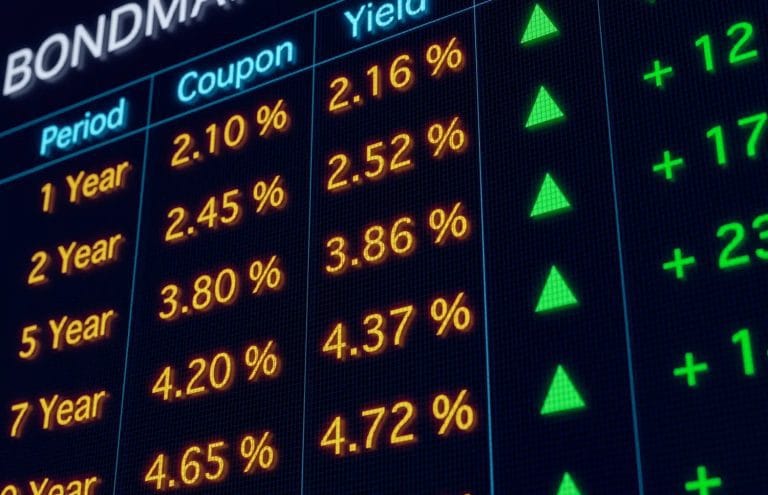🎧 Listen to This Article
U.S. Treasury yields have surged recently, catching many investors off guard. The 10-year Treasury note climbed 52 basis points since early April, sparking debate over whether this signals a shift in fiscal policy or something else entirely. Yet, as Buffalo Springfield sang decades ago, “Something’s happening here, but what it is ain’t exactly clear.”
The move isn’t driven by inflation alone. According to Glenview Trust analysts, inflation expectations contributed just 15 basis points to the rise; the bulk 37 basis points come from a jump in real yields, reflecting more substantial investor confidence in the economy’s prospects.
“Yields hit bottom when recession fears were at their peak,” says Emily Chen, a fixed-income strategist at Horizon Capital. “As those fears eased, it’s natural for yields to move higher. The question is whether the market has overreacted.”
Global Trends and Currency Signals
The U.S. isn’t alone in this trend. Government bond yields worldwide have been on the rise since their pandemic lows. Canada has experienced a similar uptick, while many developed markets show mixed results.
Despite the recent weakness in the U.S. dollar, which some critics blame for the yield rise, the currency remains stronger than most of the past two decades. “Currency moves alone don’t explain the bond market’s behavior,” notes Chen. “It’s a more complex global repricing of risk.”
Fiscal Policy and Market Impact
Concerns over U.S. fiscal health persist, with government debt hitting historic highs relative to GDP. However, unlike other nations, the U.S. benefits from issuing debt in its currency and holding the world’s reserve currency, which is a key advantage in managing debt loads.
The new tax legislation passed by the House doesn’t exacerbate fiscal pressures, according to Strategas Research, though Senate revisions may yet change the landscape. “The market is watching closely, but current moves suggest caution rather than panic,” says Chen.
Market Reaction and What to Watch
Stocks have rebounded smartly from their April sell-off, with the S&P 500 recovering much of its losses. Yet the “Magnificent Seven” tech giants remain under pressure, down 12% from their December highs.
Tariff tensions contributed to last week’s market dip, with President Trump threatening steep tariffs on European goods and smartphone makers. The odds of a U.S. recession ticked back to 41%, though only two Federal Reserve rate cuts are expected in 2025.
This week, all eyes will be on the Fed’s preferred inflation gauge, the Core PCE Price Index, due Friday. Analysts forecast a slight easing to 2.5% year-over-year, which could relieve markets.
Nvidia’s earnings report on Wednesday will also be a bellwether for tech spending, especially given its role as a leader in AI chip production.
Conclusion
The rise in U.S. Treasury yields reflects a cautious optimism, not a fiscal crisis. While the trajectory of government debt remains a long-term concern, current market dynamics suggest investors are betting on steady growth rather than recession.
“Yields are climbing because the risk of earnings declines is falling,” says Chen. “It’s a subtle but important shift that could reshape investment strategies in the months ahead.”
For further details, clarification, contributions, or any concerns regarding this article, please get in touch with us at editorial@tax.news. We value your feedback and are committed to providing accurate and timely information. Please note that our privacy policy will handle all inquiries.



